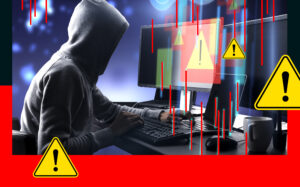Secure wireless network
Author: Zvi Fried
Date: 03/17/09
Information security is a broad concept in the field of computers, and as you know, there is no lock that cannot be broken, it's all a matter of time, but this situation is better than leaving the door open to unwanted guests and neighbors who surf at your expense and slow down your surfing speed.
In this article we will discuss the security of a wireless network, an important and critical thing since the access to a wireless network is accessible to anyone who is nearby and receives it. I want to emphasize that not everyone knows how to configure the security settings, but I will give important tips here that each and every one of you can ask the computer technician to configure in the wireless router.
- Tip #1:
Change the username and password to access the router interface. Each router has a default password that is highly desirable to change since this is the central door to the router that can be reached very easily. When you change the password, be sure to save it somewhere to allow future access without the need to reset the settings.
- Tip #2:
Set your network name (SSID) as non broadcast.
What this means for you is that your network name is not visible in the air and neighbors
And other pests won't be able to see that there is a network around unless they are
Know what your network name is. In any case, it is highly recommended not to call the network
On your last name, this is simply unwanted exposure.
- Tip #3:
Use password protection for the network. Using a password is actually a form of encryption
data between you and the router, the harder it will be to listen to the data you are transmitting.
There are several types of encryption that exist in most home routers today.
WEP 64/128 – the simplest encryption that can be broken quickly by using software that knows how to decode the algorithm.
WPA- encryption is more complex in terms of the algorithm, which can also be hacked today by programs that know how to use the dictionary.
WPA2 - a more complicated algorithm that is very difficult to crack, based on the encryption method of various security bodies, exists today in most routers and is the recommended of the three.
- Tip #4:
Use physical address filtering (Mac Filtering).
Each network component has a kind of ID that is burned onto the component during production.
Physical address filtering will only allow specific computers to access the network, but
There are programs that know how to perform spoofing, which is a kind of falsification of the physical address,
But this process is not simple and takes time.
- Tip #5:
Disable the remote management option for the router, which in most cases you will never use
and is a security breach. In most cases this option is canceled in advance, but it's always worth checking.
- Tip #6:
Lower the strength of the wireless signal, so that the transmission does not reach the neighbors who forgot to pay for the Internet this month.
In conclusion, there is no need to be paranoid, but there is also no reason to underestimate it, your privacy is an important material that you
Hosts and surfing speed, and most importantly you will have a safe and enjoyable surfing.
You may be interested in:

פישינג בעסקים: איך לזהות, למנוע ולהגיב נכון


החשיבות של סריקות פגיעויות באבטחת סייבר

הכוח של ניטור הרשת האפלה באבטחת מידע

התיקון ה-13 לחוק הגנת הפרטיות





